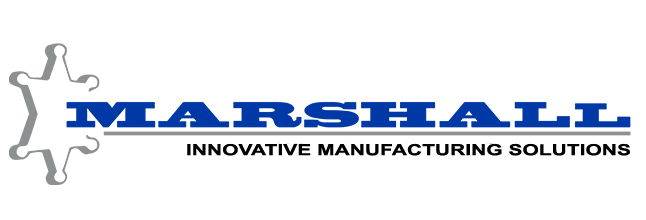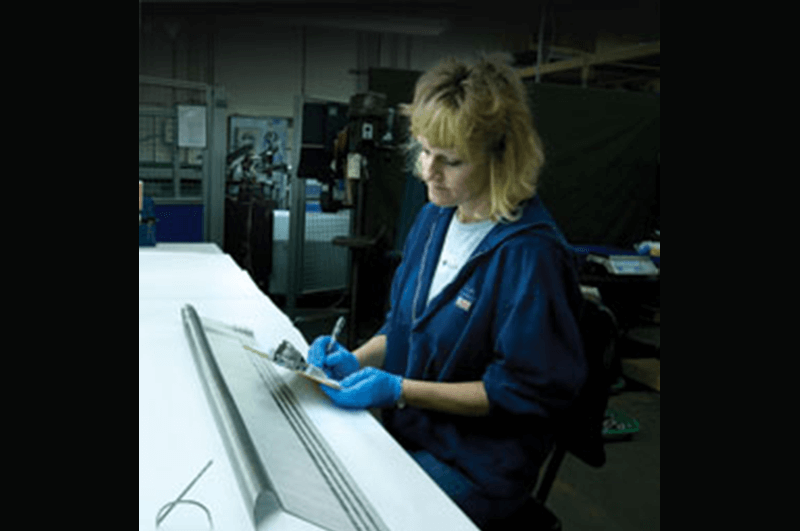1. CNC Laser Welding
CNC laser welding is the preferred method of assembly for many medical manufacturing projects. This high-speed solution does not introduce any new material into the process, enabling consistent quality and productivity. Moreover, CNC laser welding offers exceptional precision, making assembly processes highly accurate and repeatable.
Because laser welding produces less heat than other conventional welding operations, it creates less distortion during part assembly, delivering the exceptional quality and accuracy required for med tech applications. Leading medical device OEMs use CNC laser welding to unlock greater precision and time savings in component assembly.
At Marshall, we support our customers with cutting-edge CNC Laser Welding capabilities.
Our engineering team can help you uncover new efficiencies across every aspect of your medical device assembly process, from prototyping and validation all the way into production.
2. Press-Fit Assembly
Press-fit assembly is a popular method for medical device manufacturing, whereby one part is forced under pressure into a slightly smaller hole in other parts. Press-fit technology brings a range of advantages to medical component assembly, including flexibility and compatibility with automation. Unlike other assembly methods, press-fit requires no metal filler, solder, or lead to join components together—ensuring strong interconnections while reducing risk of damage to components across heating cycles.
Other advantages of press-fit assembly include quality and consistency. Automated press-fit assembly systems are some of the most reliable tools for medical components, creating a repeatable process that yields consistent results. These qualities make press-fit assembly ideal for a wealth of markets, including the medical device and food processing industries.
Marshall Manufacturing is a premier partner for press-fit assembly for medical components. We offer manual and pneumatic solutions for press-fitting and can advise you on the best assembly system for your project.
3. Epoxies
Epoxies find use in a large variety of medical solutions and products. These high-performance adhesives are compatible with a range of materials commonly used in medical devices, including various metals, plastics and glass. Epoxies for medical device manufacturing are designed to adhere reliably while meeting strict biocompatibility and other industry standards.
One of the greatest advantages of medical epoxies is their capacity for modification. Different combinations of resins, hardeners, and other components can augment the properties of these solutions, making them suitable for a host of medical components and devices. For example, one-part epoxies are ideal for more delicate applications, such as catheter and cannula assembly. Medical devices with electronic components are also a suitable match for epoxy assembly systems.
Marshall Manufacturing can provide your team with a wide selection of epoxy assembly solutions, tailored to meet your specific production standards, including FDA approved epoxy for use within food processing and water filtration equipment and for medical devices. We are here to help you build a custom medical assembly scenario to create the best device and manufacturing workflow possible.
4. Shrink Fitting
Shrink fitting is one of the most innovative assembly methods for medical devices. This process typically uses heat to expand the diameter of a part, allowing other components to be fitted within and fused to it. As the outer part cools, it contracts and shrinks, firmly clamping onto the inner part to create a strong bond. This technique provides a fast, repeatable, and easily automated process for medical component assembly.
A similar outcome can be achieved by cooling the inner component prior to assembly. Sufficient cooling will cause the inner metal part to shrink—allowing it to fit seamlessly into the outer part. As the part returns to ambient temperature, it expands to create a solid joint. This technology is also referred to as induction shrink fitting.
Marshall Manufacturing is an expert in shrink fitting for medical device components. Our shrink-fit technology can be used across a wide variety of medical device components to assemble devices via thermal expansion. Our shrink-fit solutions maintain tight temperature control to minimize distortion and comply with strict industry standards for medical components.
Medical Device Assembly with Marshall Manufacturing
Marshall Manufacturing has been providing industry-leading assembly scenarios for over 60 years. From incorporating customer-supplied components into an assembly to generating multiple machined parts, Marshall is here to match your specific manufacturing needs. Our medical assembly processes (ranging from CNC laser welding to threading, adhesives and shrink fitting) provide application-ready assemblies from day one.
Contact us today to learn more about how Marshall Manufacturing can support your business through medical device assembly. You can also connect with us for information on our manufacturing capabilities for medical customers—and how they can add value and efficiency to your production programs.

